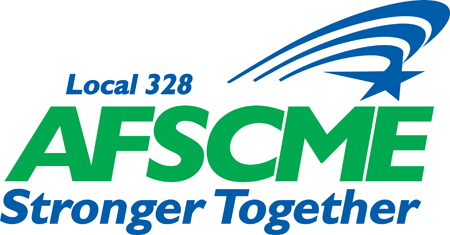Union's Summary of OHSU's Economic Proposals
OHSU is a world-class academic health center, due in part to the work of the members of AFSCME Local 238. From CNAs to cooks, from housekeepers to ITG system analysts, our members show up every day committed to delivering the highest quality service. The union believes that wages, benefits and other compensation should reflect our members’ significant contributions to OHSU’s success.
As you likely know, last week during bargaining, both OHSU and AFSCME Local 328 presented their economic proposals. In the near future, we’ll put together a side-by-side comparison, and more detailed analysis, of the proposals. We won’t be bargaining on them awhile, but we wanted to give our take on what OHSU has proposed so far.
WAGES
If you’re an employee in the UPP retirement system, you’ll receive a 6% wage increase, in addition to any other increase that is negotiated. But this doesn’t exactly mean that employees will receive a 6% raise. OHSU is proposing to pay 6% less into employees’ UPP accounts and putting in their paychecks instead. You could choose to keep diverting it into a retirement account, but if you consider overall compensation, this isn’t a raise at all. In fact, it’s a wash. And remember -- when this 6% went into your UPP account, it wasn't taxed; if you take it as pay, it will be taxed.
Pay ranges for all classifications would be increased by 5%. This does not mean that all employees would receive a 5% raise. It means that those at the bottom of their pay range would move up to the new bottom of the range, which could be up to a 5% increase. Most employees would see no change in their current pay rate. If an employee is already at the top of his or her pay range, this increase creates additional room to grow, but would not result in an immediate pay raise.
Progression increases in each quartile would be reduced as follows:
First quartile from 4.25% down to 4.0%
Second quartile from 3.0% down to 2.75%
Third quartile from 2.75% down to 1.5%
Fourth quartile from 2.5% to down 1.0%
These reductions would significantly delay your progress to the top of the pay range. Right now, it takes 10 years to get from the bottom of the pay range to the top. Under OHSU’s proposal, that would increase to 17 years.
When an employee is hired from preferential hire list, they will receive their previous pay rate, as long as it is not above the midway point of the pay range. If it is above the midpoint then the pay rate will be negotiated by the employee and the unit manager. In either case, the employee’s first anniversary increase would come 12 months after they are rehired.
Evening-shift differential would be reduced from 7% to 5% or $1.25, whichever is greater. Night-shift differential would be reduced from 12.5% to 10% or $2.25 an hour, whichever is greater.
Salaried employees would no longer be subject to the contract language of Article 19.10, which addresses shift curtailment and cancellation.
The night-shift differential for medical laboratory scientists, medical laboratory technicians and respiratory care practitioners would be reduced from 15.5% to 12%.
The night-shift differential for pharmacy technicians would be reduced from 20.5% to 15% and for pharmacists it would be reduced from 20.5% to 12%. The 5.5% weekend day shift differential for pharmacy technicians and pharmacists would be eliminated.
Patient account representatives 1 and 2 and patient account coordinators 1 and 2 who certified as Certified Revenue Cycle Specialists will receive a 5% differential. This proposal adds classifications to those who are eligible for this certification differential.
These proposals would obviously reduce the earning power of the average AFSCME-represented employee. Keep in mind, management has readily admitted that they are in good financial shape, so these proposed pay cuts are not being made out of economic necessity.
RETIREMENT & HEALTH INSURANCE
A voluntary retirement incentive would be available to employees who are at least a .5 FTE and agree to an effective retirement date of no later than December 31.* The retiring employee could choose one of four options:
A deposit of $20,000 into a health retirement account
Twelve months of continuing medical coverage under COBRA at the current contribution level
Two months of base pay, with a maximum of $20,000, prorated based on FTE
One month base pay, not to exceed $10,000, prorated by FTE and six months continuing coverage under COBRA.
*Note: Management is considering additional eligibility requirements in order to qualify for this benefit.
This is another measure intended to reduce labor costs. More senior employees are higher in the pay range; those who retire would be replaced with new hires or by promoted employees who would earn wages closer to the lower end of the pay range.
Relief employees would be eligible for insurance coverage if they work a minimum of 520 hours during a six-month measurement period.
VACATION
The vacation accrual rate for salaried employees in their first ten years of service would be 15 days per year. For employees in their first 5 years of service this is an increase of 3 days per years; for all others it represents no change.
MISCELLANEOUS
OHSU would create a new CNA scholarship program so that CNA1s can become eligible for CNA 2 positions.
Cardiac cath lab technologists and radiation therapists would no longer be eligible for bonuses for providing “back up” assistance to their department.
Do you sense a theme with OHSU’s economic proposals? Your feedback and questions are very important to us all the time, but especially during bargaining. Please comment here as well as “like” our page on Facebook to let us know your thoughts.
